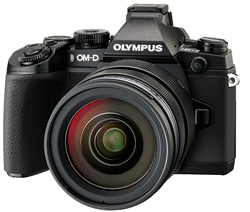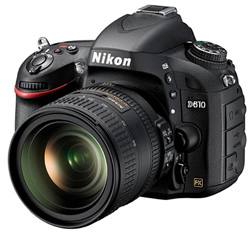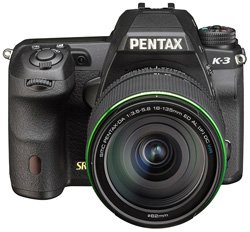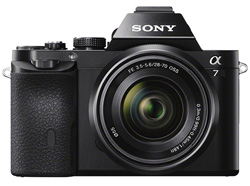Could anybody have predicted the speed with which smartphones have replaced compact cameras?

In less than 12 months, an entire class of product has been rendered socially if not technologically obsolete. There is still some interest in compacts: superzooms; outdoor/underwater/weatherproofed models; and up-market models like the Ricoh GR and the Sony RX1, which professional photographers wouldn’t be embarrassed to be seen carrying in their shirt pocket. But the shrinking camera shelves in the likes of Harvey Norman and Big W bear testament to the rapid demise of the dedicated compact camera as a mass market product. That’s quite a milestone when you consider Kodak kicked off the amateur camera craze back in 1880-something!
To indulge in a fairly safe generalisation, dedicated compact cameras will still deliver higher-quality images than the cameras built into smartphones, but superior images are almost irrelevant to the snapshooter market. And the ability to share images direct from the device trumps image quality. Good enough is good enough. What’s not good is being seen out in public with last year’s technology (to mangle one of President Kennedy’s famous quotes, we are all nerds, now). Compact cameras, as far as the mass market is concerned, are definitely old stuff. (So 20th Century!)

So it’s little wonder the camera makers have been like deer staring at the oncoming headlights of the smartphone juggernaut for the best part of 2013. No-one from the marketing department told the camera designers to stop designing me-too, imcrementally-better-than-last-year’s-model-but-in-pink cameras, because no-one had the foresight to see that they would be surplus to requirements once the smartphone, tablet and phablet show hit town.
But the camera companies have picked themselves up, dusted themselves down, and struck out in all directions to either maintain or establish a market for their products for the future. As a result there is plenty of reason for customers to visit your camera store this summer. Things have changed. Really changed.
In the past few weeks the following models have been released:
– Panasonic Lumix GX7;
– Olympus OM-D EM-1;
– Pentax K3;
– Nikon D610;
– Sony a7, a7r.
– And just this week yet another full frame DSLR from Nikon, the highly desirable Df, reminiscent of the glory days of photojournalism. Fujifilm also deserves a mention for its excellent X-series, especially the interchangeable models like the latest release XE-2. (Rumour has it they’ve got a bit of margin to them, too!)

The Nikon 610 is perhaps the least remarkable of these cameras, as it’s a minor tweak to the D600, but it’s worth mentioning here because at around $2000 for the body, it makes full-frame photography an affordable prospect for enthusiasts. Not the first DSLR to do so, but a probable pointer to where the DSLR market is heading.
The other ‘traditional’ DSLR in this list, the Pentax K3, is remarkable in delivering the first switchable anti-aliasing filter, extending the capabilities of the camera’s sensor so that it’s almost two cameras in one. Then there’s the tank-like build, the weather sealing, and the tasty price, particularly for the Australian and New Zealand markets, for what is really a pro standard camera.
The Panasonic Lumix GX7 and the Olympus OMD EM-1 see the two key M43 players perfecting their technology. Both these cameras were highly rated Photo Review Editor’s Choices, not least because they both not only have actual viewfinders, but bright, high resolution viewfinders. Why the camera designers decided that LCD screens were perfectly adequate substitutes for viewfinders is a mystery of Easter Island proportions. And they will never be, as long as photographers insist on taking pictures outdoors in any kind of daylight. An LCD screen which was able to outdo sunlight would not only flatten the camera battery in short time but burn out the user’s retina!
The GX7’s electronic viewfinder can also be tilted upwards – something no optical viewfinder can do. The sleek, compact rangefinder styling also incorporates sensor-shift stabilisation, and built-in Wi-Fi for image sharing with, and remote control by, smart devices.
The Olympus E-M1 adds extra performance features to what many would nominate as the stand-out enthusiast camera release of 2012, the E-M5. (Why the E-M1 comes after the E-M5 is anybody’s guess, unless Olympus is trying to hint that the E-M1 is somehow resonant of the classic Olympus OM-1 film camera. But Olympus is not alone in having a confounding and illogical naming system for their cameras.)

Improvements include a better grip, a larger viewing screen, and a viewfinder which automatically adjusts brightness levels to suit ambient lighting conditions.
The impressive 5-axis image stabilisation system has been improved, and it’s a camera demonstrator’s delight. Hand-held video on the move appears as if shot on a tracking system thanks to this remarkable innovation, as was shown to attendees by the enthusiastic staff on the Olympus stand at The Digital Show in Melbourne in September.
But, saving the best ’til last, the new Sony full frame mirrorless interchangeables are the models which have the potential to really disrupt the established order in digital cameras. With their Zeiss lenses, lightweight (around 400 grams) and slimline bodies, aluminium alloy chassis, mid-range pricing and above all the full frame sensors in both the 24-megapixel a7 and 36-megapixel a7r, these new cameras challenge both Olympus and Panasonic for enthusiast applications, and Canon and Nikon full-frame pro DSLRs.
The ($2000 body only) a7 will be preferred by enthusiasts and professionals due to its superior hybrid AF system, while the extra megapixels in the ($2500) a7r and lack of anti-alias filter will suit it to studio photography.

Purists might argue that electronic viewfinders can’t match true optical viewfinders, but they also used to say that a digital camera would never match film. Photo Review’s technical editor Margaret Brown has no quibbles with the XGA OLED, 1.3cm, 2.4 million dot unit on the a7:
The EVF on the a7 has a fast refresh rate that makes it ideal for recording movement, both when shooting stills and recording movies.
And it adds the convenience of being able to display camera settings and playback recorded images and video clips without the user having to take their eye from the scene. This is a great advantage in bright outdoor lighting, where LCD monitors usually become unreadable.
With no mechanical parts, EVFs should prove more reliable as well.
Full-frame rules
Full-frame sensors aren’t simply about larger pixels and thus cleaner images. While digital camera technology now runs rings around what could be achieved using 35mm film cameras, the one critical image capture feature in which enthusiast film cameras still maintained the edge over APS-C-format enthusiast digital cameras is depth of field control. Yet it’s arguably the most important tool in the creative photographer’s toolkit. That ability to easily isolate a subject from the background or foreground is fairly well non-existent in small-sensor digital compacts, unless the subject and background are separated by considerable distance, and not nearly as easy with M43 and APS-C format sensors.
The whys and wherefores of circles of confusion, hyperfocal distances and all the other headache-inducing technicalities behind understanding depth of field are beyond the scope of this article (and the competence of the writer!) to explain. Without getting into the maths of the thing, depth of field is inversely proportional to format size. So an M43 camera has twice the depth of field at any given aperture compared to a full frame sensor (as the sensor is half the size), and an APS-C camera 1.5 or 1.6x the depth of field. This is an advantage when the photographer wants maximum sharpness through the image, but reduces control at the other end – where the photographer wants a shallow depth of field.
Especially in bright light, where apertures need to be closed down to prevent overexposure, this has been an intrinsic challenge when using non full-format sensors for specific compositions. Portraits are a good example. Using neutral density filters to reduce the amount of light hitting the sensor can help, but that’s more in the way of a workaround. Full-frame sensors are the real solution. Full frame sensors combined with lenses with wide maximum apertures provides direct depth of field control over the widest range of shooting situations.
Full frame sensors, lenses with wide maximum apertures and the ability to dial ISO up or down between shots – something one couldn’t do with a roll of film – gives the photographer even more control with a DSLR than he or she had with a film SLR.
But until the arrival this year of the first few full-frame DSLRs at prices the average enthusiast can countenance, and now these new full-frame mirrorless interchangeables from Sony, this combination has been denied to the non-professional.
And for the professional, there’s no particular virtue in lugging around kilos of bulky camera bodies and heavy lenses. It’s simply been, until now, the only way to get the shot. But most pros would gladly swap a 15 kilo camera bag for something a little easier on the shoulders, provided they could be guaranteed of getting the same results.
While the full reviews haven’t yet come in on the actual performance of the new Sonys, the initial reaction of technical types like Margaret Brown (see her ‘First Look’ review on the PR website) has been extremely positive.
With the compact market pretty well totalled, and DSLR sales dipping for the first time, the industry was crying out for some innovation. OIympus, Panasonic, Pentax and Sony have responded with their latest releases. One would expect Canon and Nikon to respond to what looks like a full-bottle siege of the Canikonian dominance of the camera market. As Ms Brown remarks in her conclusion to the a7 First Look review, ‘this appears to be the beginning of a great time for digital photographers.’
Let’s hope they realise the treats on offer and go shopping for a new camera – with all the trimmings – this summer.





Be First to Comment